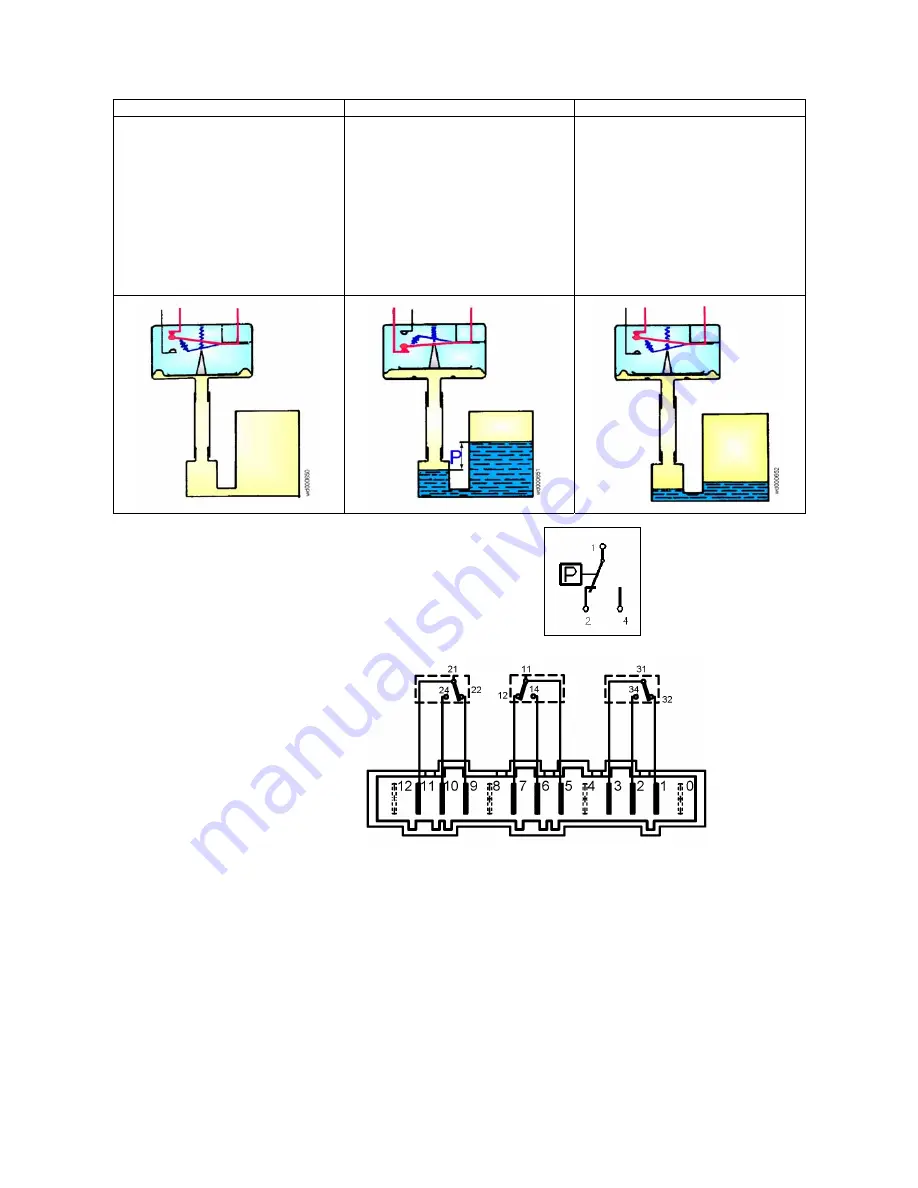
SOI/DT 2006-01 dmm
40/71
599 37 47-13
5.6.3 Operating
principle
Tub empty
Water flows into the tub
Water is drained from the tub
As there is no water in the tub,
there is no pressure on the
diaphragm, which thus remains in
the lower position due to the
counterforce exerted by the
spring.
In this position, the contact is
closed on "empty".
When the connection between the
tub and the pressure chamber is
interrupted by the water, the
pressure between the pressure
chamber and the internal chamber
of the pressure switch increases.
This increase continues until the
diaphragm is raised sufficiently to
action the switch (rapid-action). In
this position, the contact is closed
on "full".
As the level of water in the tub
diminishes, the pressure exerted
on the diaphragm is reduced.
The diaphragm is pushed
downwards by the counterspring
until the switch resets (i.e. returns
to the "empty" position).
5.6.4 Electrical
symbol
1. Common
contact
2. Contact closed on "empty"
4. Contact closed on "full"
5.6.5 Circuit
diagram
11-21-31:
"Common" contact
12-22-32:
"Empty" contact
14-24-34:
"Full" contact
5.6.6 Checking for efficiency
Correct operation of the pressure switch depends on the correct operation of its hydraulic circuit
(tube and pressure chamber):
•
Check for leaks (in which case too much water would be introduced, as the switch would not close on
"full" or, in the event of microleakage, would return to "empty".
•
Check for obstruction (in which case the contacts may be jammed on "full" or "empty").
After checking the hydraulic circuit:
•
Introduce water into the tub to the highest level and check that the contacts close correctly on "full".
•
Drain the water from the tub and check that the contacts close correctly on "empty".
















































